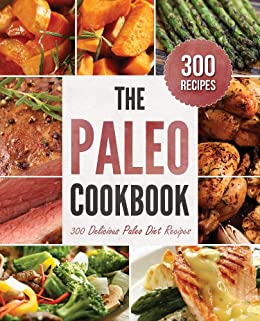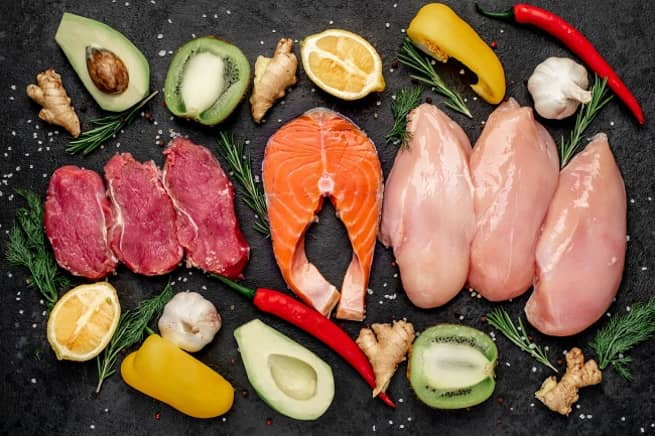
You're likely asking "Who invented Paleo?" American scientist, Dr. Loren Cordain, is the person who came up with the Paleo diet. He is also a leading advocate of Paleo. But which of these two men should you believe? Or is it just another myth? You'll find out the truth about this fascinating diet in our next article!
Dr. Loren Cordain
Paleo is a lifestyle plan that promotes eating foods that our hunter/gatherer ancestors consumed millions of years ago. It's controversial. This diet was based on research that looked at the Stone Age diet. It was low in salt, but high in potassium. High salt intake is linked to many modern diseases. Dr. Cordain believes that living like our caveman ancestors can help prevent many diseases.
Cordain has been a prominent figure in the fields of nutrition and evolution. His research has been featured by many major media outlets, including Dateline NBC as well as the front page of The New York Times. He has written three books on the subject as well as a newsletter. The resources below provide more information about Paleo.
The Paleo Diet can be divided into three levels: basic to intermediate and advanced. At the lowest level, you eat fewer "open" meals and eat more foods that are forbidden to us. You can eat legumes, other seeds, but only in moderation. At the highest level, you can eat up to 20 meals and 20 snacks a week. This diet is recommended for life if you wish to live long and prosper.

The diet is based on the premise that the hunter-gatherers' diets are indicative of high protein intakes. However, Cordain cites research to support his theory by using an ethnographic atlas of 229 hunter-gatherer societies. His research showed that 73% of the people he studied got more than 50% of their energy through animal foods, while only 14% ate plants. Katherine Milton, however, rebutted Cordain's findings in Am. J. Clin. Nutr. 71:665-667.
This hypothesis might seem to be a valid one, but Dr. Cordain offers strong counterarguments. Cordain suggests that a diet low carbohydrate and fat can increase one's chance of developing cancer. However the evidence disproves this assertion. For example, the diet's health benefits outweigh any potential drawbacks. Cordain's study also points to its many limitations and is not yet definitive.
Walter Voegtlin
Paleolithic is a way for eating that has been around since at least 35years. Walter Voegtlin is the gastroenterologist that developed The Stone Age Diet. This diet was developed following extensive research into man's eating habits and ecology. His research found that the diet was good for people suffering from common digestive problems. It also offers many health benefits such as improved brain function and lower risk of developing colon cancer.
Voegtlin believed that humans evolved to be carnivores and therefore the diet should be the same. Voegtlin believed people were genetically related to dogs and sheep and that they should eat a carnivorous lifestyle. Modern data supports the diet, which has mixed results but is generally positive. But they must remember that modern humans are not as adaptable to the paleo diet today as animals were ten thousand years back.
In the book "The Real Diet of Man", author Walter Voegtlin uses the chemistry of food to prove the effectiveness of this diet. The book highlights foods with low glycemic and high fiber levels, as well as balanced essential fatty acid. It is focused on foods that help the body function optimally. Ted Slanker (author) and Walter Voegtlin (authors), have been reporting on nutrition research fundamentals for more than 15 years. Moreover, they distill complex studies into the basic nutrients for human health.

Some food groups are off limits on the Paleo diet, including processed foods, sugar, salt, and grains. Because they are grain-fed, some animals are not suitable. Additionally, modern fruits and vegetables are very different from those that were consumed in paleolithic times. Paleo-diet advocates often cite studies that were limited in number and not sustainable for long periods of time. These studies do not support the Paleo diet in its entirety.
A study of animal diets is required because the Paleolithic diet is heavily dependent on animal protein. Although Paleolithic diets weren't entirely vegetarian, they had a significant influence on modern humans. Many of these researchers believe that animals' diets were not entirely vegetarian or vegan. And while eating more meat and fat may have lowered cholesterol levels, it can also improve cardiovascular health.
FAQ
What are my options for learning about cooking?
There are many cooking classes available all over the country. Many schools offer courses on baking, pastry, or wine tasting. If you want to learn more about cooking, you can enroll in a class at a local community college or vocational school, or attend one offered by a private institution.
What is the best way to learn to cook?
Cooking is something that everyone should be able to do. If you don't know how to cook, you miss out on some great food experiences. You must start by finding a recipe you enjoy and following it closely when you learn to cook. Next, practice making small changes until you are comfortable cooking the dish. Finally, try cooking for others. This will improve your cooking skills as well as test your culinary abilities.
Do I need to go to culinary school to be a chef?
No. No. Some went to culinary school simply to gain experience. Culinary school is preferred by most chefs because they have more opportunities to grow and learn. Culinary schools offer students hands-on training, which helps them build valuable skills and improve their cooking knowledge.
What's the difference between a professional chef and an amateur cook?
A chef prepares food for other people. A cook prepares meals for others. Both jobs require the preparation of food. However, chefs work directly with their customers. This means they may have to decide what to serve guests based on their preferences. Cooks don't interact with customers. Instead, they ensure that the food tastes delicious before they serve it to others.
How do I get hired as a chef?
To get a job as chef, you must first complete a culinary arts degree. You should next join a professional organization such as the American Culinary Federation. This organization offers certification exams, as well networking opportunities.
Can I learn to cook alongside my kids?
Yes! Children love to help in the kitchen. It's fun and teaches kids responsibility as well as teamwork. Children can help in everything, from washing vegetables and cutting onions. They will enjoy helping you to cook if your children are safe with knives.
Statistics
- The median pay for a chef or head cook is $53,380 per year or $25.66/hour, according to the U.S. Bureau of Labor Statistics (BLS). (learnhowtobecome.org)
- On average, chefs earn $58,740 a year, according to the BLS. - learnhowtobecome.org
- According to the BLS, chefs earn $58,740 a year. (learnhowtobecome.org)
External Links
How To
How to cook a steak
The thickness of any meat will dictate the cooking method. For example, thinner steaks are best cooked over low heat, while thicker ones need higher temperatures.
Don't overcook them as they will lose flavor. Remember to take your steak out of the oven when it's done. You won't burn.
Cooking times will vary depending on how large the steak is and what degree of doneness you desire. Here are some general guidelines.
Medium Rare: Cook till medium rare. This is when the internal temperature of the food reaches 145°F (63°C). This will take between 3 to 5 minutes per side.
Medium: Cook till medium. This typically takes 6 minutes per side.
You are done when the internal temperatures reach 180°F (82°C). This typically takes 8-12 minutes per side.